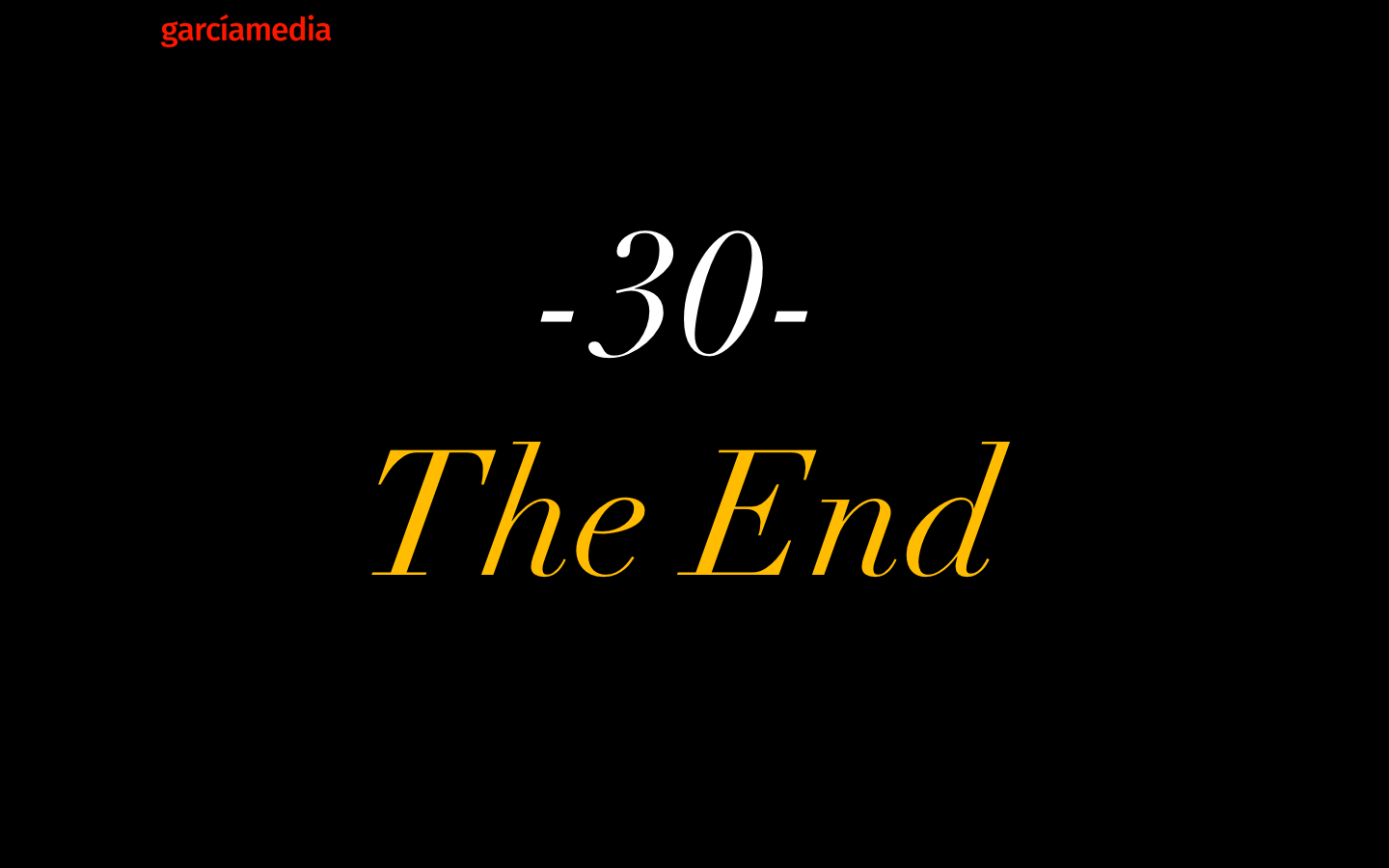
In the days when we edited copy with a sharp pencil or a red grease pencil, with a glue pot nearby to string together the pages of stories to be published, the -30- was the code for “the end”. In fact, it was the gluing together of the pages that would first signal to a copy editor that “this one is too long and needs to be cut”. Nowadays there is hardly any copy editing (sad!), and there are even fewer grease pencils around and definitely no glue pots. Nothing needs to be pasted together. It is all on the screen—one screen at at time, I may add—so the writer/editor is never fully aware of how long the story is although, of course, there are word counts available at every step, but it is not the same.
As a result, and I see this in my workshops, and with my Columbia students, many stories run a longer course that they should. Yes, it is as if it is difficult to come to an end. In the days of print, one was given space limitations from the get go: “This will be a three-column piece,” the editor would advise the reporter. Or, “give me about 6 inches of copy.”
The sky is the limit today. In the digital world, where the barrel is deep and nobody is counting inches, the tendency is for the stories that never end.
Should not be.
Curse of the Never-Ending Story
So I found this New York Times piece by Amanda Hess irrisistible, and so true. Hess laments that stories don’t end anymore. Of course, she is not writing about digital stories, but the thought is one worth contemplating.
“Nothing ends anymore, and it’s driving me insane,” Hess writes.
She refers to sitcoms and movies, and how they keep coming back, and how grand finales are really NOT so.
The series finales of “Roseanne,” “Murphy Brown” and “Will & Grace” were not finales after all. The speed with which stories are expanding is beginning to outpace our capacity for language. The term “sequel” is insufficient to describe this summer’s conspicuously titled “Avengers: Infinity War,” an extension of 18 previous Marvel Cinematic Universe movies which in turn, fed into the fifth season of a television show, “Agents of S.H.I.E.L.D.” Recently the man who spun the “Despicable Me” Minions off into their own franchise threatened a “reboot” of “Shrek,” but featuring the same characters and the same cast: a ghastly re-enactment of blockbusters past. Meanwhile, on smaller screens, social media has given rise to self-perpetuating content machines.
When to end some of our digital stories
When I conduct my digital storytelling workshops I, of course, emphasize that the length assigned to a story to be told lineally is always a decision based on the content. The readers will keep thumbing up if the content and visuals are seductive.
However, my recommendation is that about five visual assets are just about perfect to illustrate an ordinary story (not a major multimedia piece). This will allow us to be disciplined with what we choose to enhance our stories visually.
Everybody wants a story that ends. On mobile devices, sooner is better than later.
So, time to bring back that old sign -30-.
Of related interest in TheMarioBlog
For the record: word of the year 2018
I am not happy to see that the folks at dictionary.com have chosen “misinformation” as the word of the year.
I thought all along that it would be “lies”, or perhaps “investigation”.
https://www.dictionary.com/e/word-of-the-year/?param=HP
A highlight:
The rampant spread of misinformation poses new challenges for navigating life in 2018. As a dictionary, we believe understanding the concept is vital to identifying misinformation in the wild, and ultimately curbing its impact.
TheMarioBlog post #2958